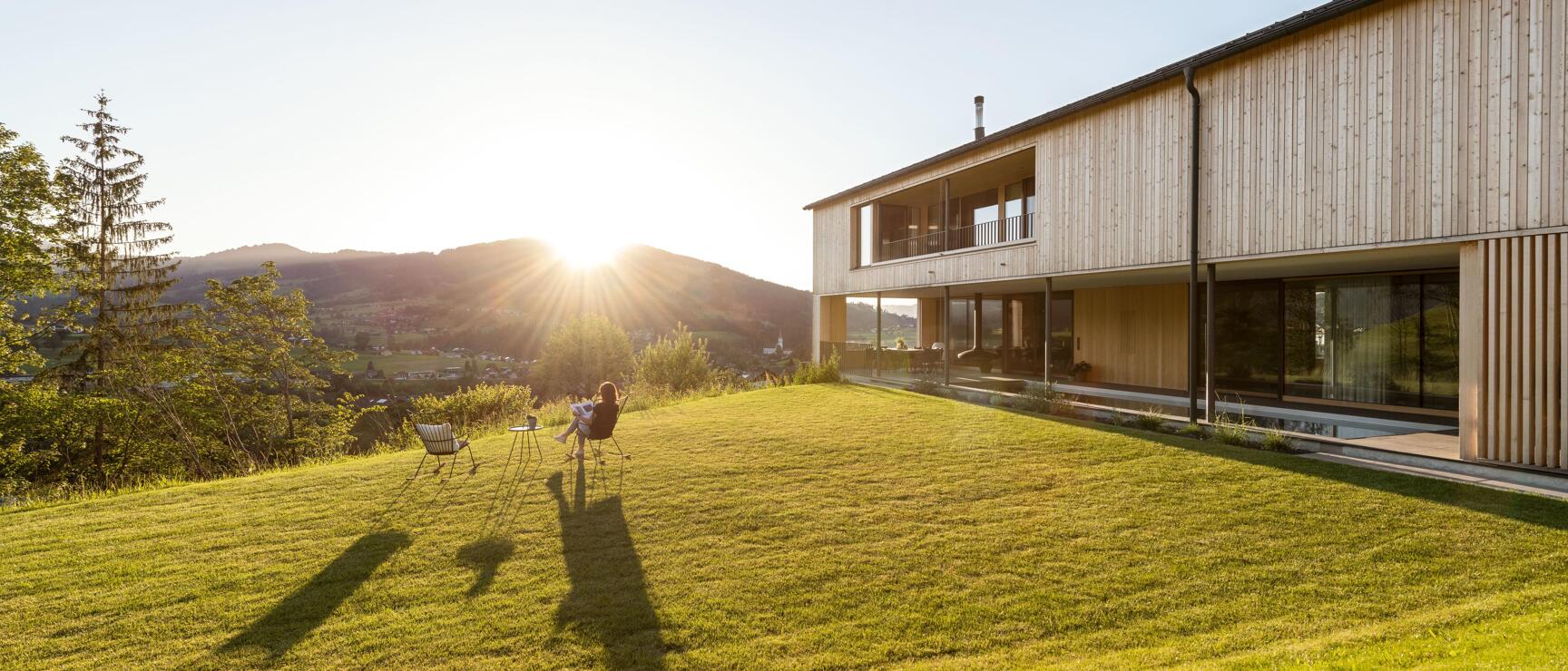
Bregenzerwald in Vorarlberg
Mountain cheese, wooden architecture, and nature.
Anyone visiting Vorarlberg will notice it straight away: In the Bregenzerwald, building is done differently. Centuries-old houses showcasing traditional wood craftsmanship stand alongside modern wooden structures with expansive windows. Whether private homes, museums, or nurseries, they all share one thing: they’re made of wood. Often spruce, fir, elm, or beech, and always crafted with meticulous attention to detail. It’s a delight to wander through the villages and uncover these architectural gems.
You can look forward to more than just creative architecture and design: There’s also exceptional cuisine and breathtaking natural experiences. Enjoy hiking, cycling, and mountain biking in summer, or skiing, winter hiking, and cross-country skiing in winter.
The Bregenzerwald and Großes Walsertal Guest Card is your "ticket" to a world of mountain adventures and indulgent experiences. It offers unlimited rides on cable cars and access to eco-friendly public buses.
Meet the Bregenzerwald
Top highlights
Top events
Unique places to stay
Valley meadows to Alpine pastures
Three-stage farming
In the Bregenzerwald, cheese reflects the landscape itself. The region’s 15 valley dairies produce the famous mountain and Alpine cheese – robust, aromatic and full of character. Each summer, more than 200 tonnes are made on over 60 Alpine pastures, with every wheel shaped by nature’s rhythm. From May to October, cows graze on herb-rich meadows; in winter they eat air-dried hay from the valley – simple and pure.
A unique feature is the three-stage farming system, listed as national UNESCO intangible cultural heritage in 2011. In spring and autumn, the animals move to the Vorsäße, intermediate pastures at about 900 metres. Summer is spent on the high pastures, where the air is clear and the herbs are most aromatic. This cycle defines both the cheese and daily life in the Bregenzerwald – a quiet balance between people, animals and nature.